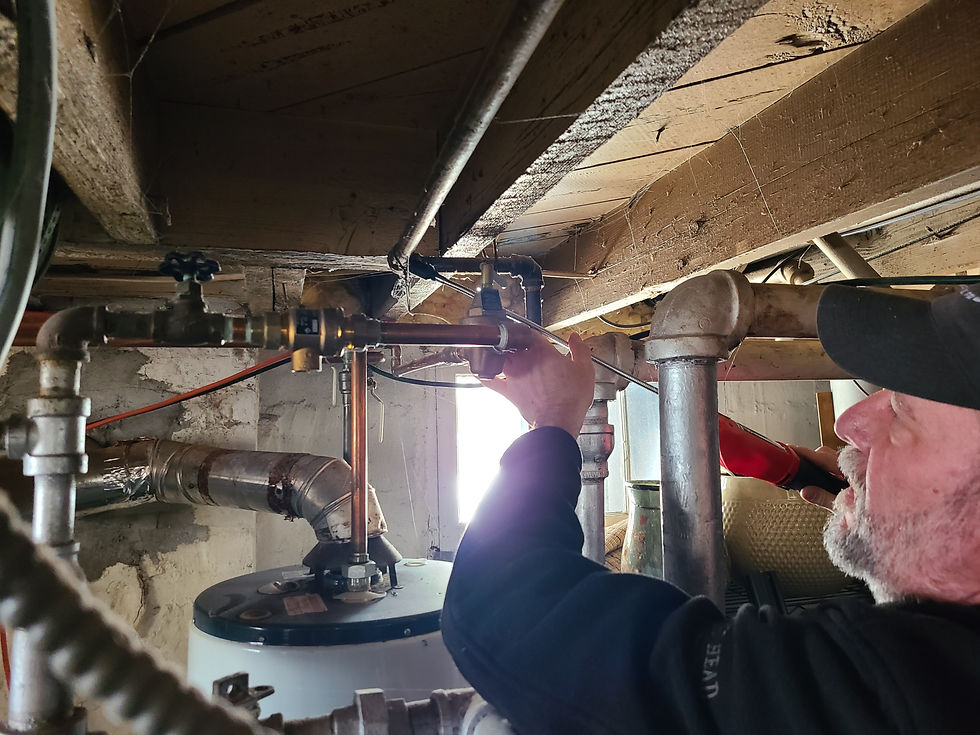Written by Leah Karmaker
Just Housing, Minnesota Interfaith Power and Light (MNIPL), and Northern Built Pro came together this spring as Heat Pump Helpers! We performed whole-house assessments with five Duluth-area households to consider air source heat pump technology as a potential strategy for reduced energy costs and household-associated carbon emissions.

Bret Pence of MNIPL led the way through participant recruitment and project conception, and secured a grant to provide a cost sharing stipend for participants. Just Housing partnered with Randy Williams of Northern Built Pro to provide advanced home assessments and ASHP feasibility analyses. We assessed the existing conditions, mechanical systems, and energy consumption of each home through the lenses of durability, health, and energy efficiency.
We worked with five very different single-family homes; the oldest built in 1920, and the newest built in 2003. We saw a variety of assemblies (from stick built to solid timber), energy sources (electric solar, grid tied electric, natural gas, propane), and mechanical systems (boilers, wood stoves, existing supplementary heat pumps, just to name a few).

Space heating and domestic hot water made up most of the homes’ propane or natural gas use; only one house utilized propane for cooking. The chart above summarizes energy consumption for each house. Size and energy, however, were just two variables in our equation. Our analysis and recommendations also considered owner goals, owner concerns, envelope performance, moisture control, durability, health, and safety. Swapping out or supplementing an existing system to utilize super-efficient heat pump technology is often doable, but requires an expertise driven, systemic approach.

In several of the houses, we found asbestos, gas leaks and other safety concerns that were more urgent than replacing the heating systems. The success of any home intervention depends on a holistic and thorough analysis. But more importantly, this type of analysis also ensures that said intervention does not put the health, safety, and financial stability of the occupants at risk.
This project has been especially insightful and impactful for me. Considering how siloed the building industry is, I feel grateful to work with a team that takes the “house as a system” approach and advocates for occupant health. Grounding this work in building science and systems thinking, and applying it to a variety of housing types was a rigorous and rewarding learning experience for me.
Stay tuned for more updates: in the coming months, MNIPL will assist participants as they consider and select retrofit measures, seeking contractor bids for installation, securing financing, and will share lessons learned.
This project is made possible in part by a CERTs seed grant.

Comentarios